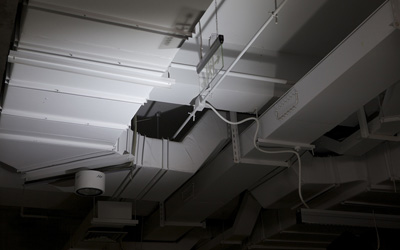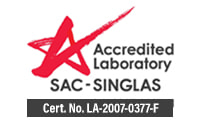
Duct Cleaning & Mold Remediation is Beneficial If Done Correctly
Indoor Air Quality (IAQ) is of concern to all of us since we spend a substantial amount of our time indoors, be it at the office, our home or other commercial buildings and establishments.
The first step to consider, if you need to do mold remediation or duct cleaning, is to determine if the mold types (species) and levels or condition of your ducts are the source of a current or potential health problem.
It is important before embarking on such tasks to appoint a professional who can conduct an indoor environmental walkthrough that includes a pragmatic series of diagnostic tests to determine the environmental status of your home or office.
What Does Mold Remediation and Duct Cleaning Entail?
Mold Remediation includes a comprehensive inspection of all surfaces including fixtures and fitting i.e. drywall, wood, carpet, upholstery, building furnishings, etc., which may also include HVAC ducts.
Based on the IAQ audit results ascertaining the types of mold species residing in your environment and the levels of contamination, the mold remediation specialist will determine the remediation protocols.
It is important that the remediation service provider cleans all the contaminated components in such a manner that contaminated sections will not cross-contaminate other areas in your indoor environment.
It is highly recommended that porous surfaces that are highly contaminated should be discarded. Surfaces that can be decontaminated must be remediated using proper remediation protocols. As an added protection, non-leaching antimicrobial chemicals can be applied to prevent or retard future growth. It is important that all chemicals used should be registered with relevant bodies for the specific application.
Duct cleaning entails cleaning the various cooling system components of forced air systems. These components include the supply and return air ducts and registers, grilles and diffusers, condensate drain pans (drip pans), fan motor and fan housing, variable area volume (VAV) boxes, fresh air ductwork, and the air handling unit plenum.
A HEPA Air scrubber should be deployed to protect individuals from exposure to airborne contaminants dislodged during the cleaning process. A Laser Particulate Counter should be used to monitor the particulate level to ensure all airborne contaminates are removed.
In an office type building, remediation should be performed outside of office hours to minimize disruption.
About IAQ Consultants Singapore
IAQ provides assessment and consultancy services in the field of indoor environmental health through testing, inspection, remediation and expert application of technology with the aim of achieving a better indoor environmental quality for your environment. IAQ provides the following services:
- IAQ AUDIT based on NEA guidelines
- Building Sciences Evaluation
- Environmental Health Check
- IAQ is an Accredited Environmental Microbiology Laboratory
- Mold Remediation Services
- HVAC System Remediation
Why IAQ?
IAQ has vast experience in indoor environmental testing and providing customized solutions specific to the problems encountered. This has earned us a reputation for delivering Solutions for Healthier Environments – because IAQ always attacks the root cause of a problem, not just its symptoms.
We are a multi-disciplinary environmental testing and consultancy provider. Our experience and knowledge of environmental solutions are rigorously reinforced by the application of local and international standards.
Ride on the IAQ Advantage
Our proven multi-disciplinary approach addresses all potential environmental and corporate social responsibility requirements, providing our clients with:
- Proven combination of local know-how and international experience
- Effective and cost-efficient solutions, which meet regulatory and corporate requirements
- Single source solution


